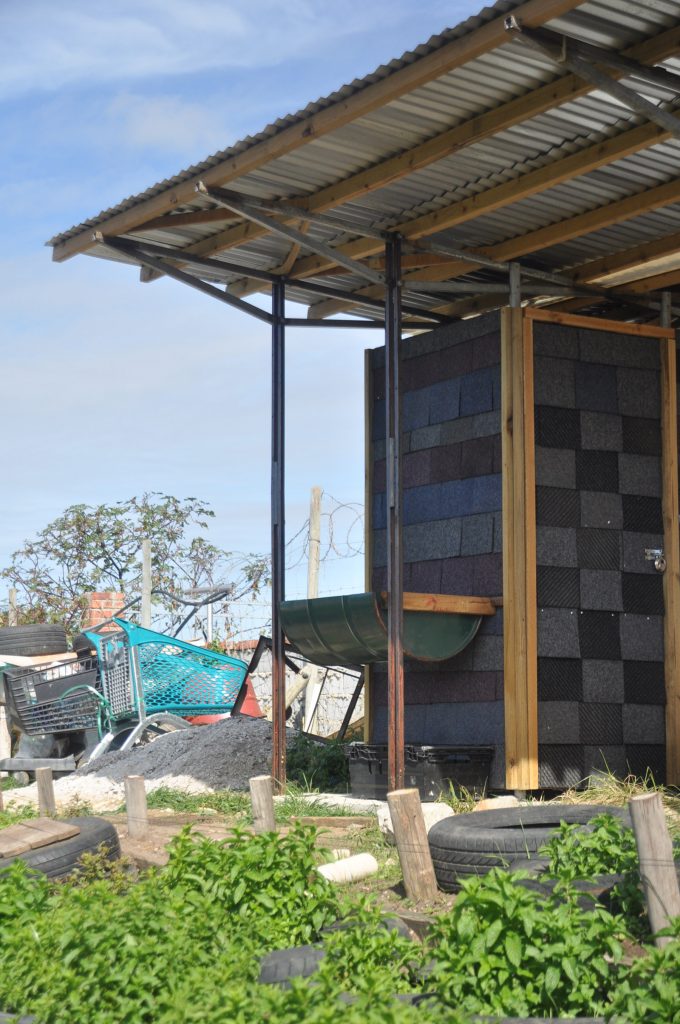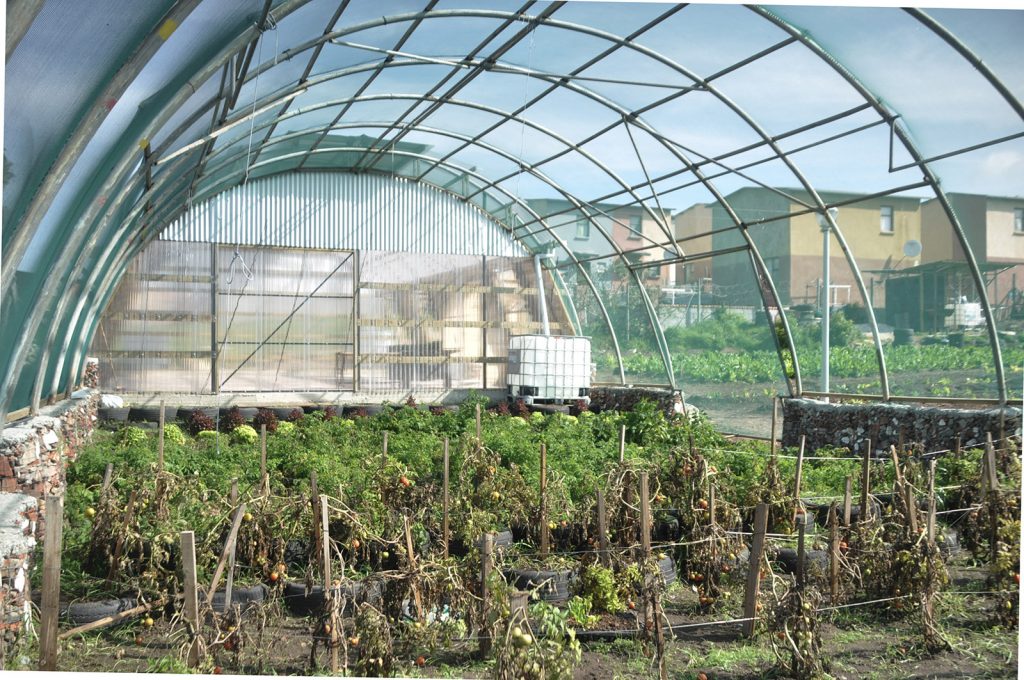Comprising a training hall and plant nursery, shop and kitchen, and a sanitation block, the Lim’uphile Co-op is broken down into distinct buildings that are all different, but born out of a similar logic
This case study was published as part of a longer essay by Tomà Berlanda on the use of waste as a building material in South Africa, published in our Waste issue (AR June 2021)
Borrowing similar motifs from Collectif Saga’s other buildings in Gqeberha, South Africa is the more recent construction of the Lim’uphile Co-op, in Walmer, a township closer to Gqeberha’s centre, completed in 2020. On the western edge of the township lies the Sakhasonke Village, a settlement of more than 300 units initiated in 2002 by the General Motors South Africa Foundation. Resident Xolani Siwa set up the Lim’uphile Agricultural Organisation and acquired ownership of a 1500m2 former brownfield plot tucked on to the edge of the village. Here, Siwa grows and sells affordable vegetables, promoting better nutrition.
Collectif Saga met him in 2018, and partnered with his NPO by assisting in the design and construction of their facilities. Comprising a training hall and plant nursery, shop and kitchen, and a sanitation block, the programme is broken down into distinct buildings that are all different, but born out of a similar logic to Silindokuhle. The result is a bricolage of sorts, stemming from what was found onsite, namely an old shipping container and some greenhouse tubular elements. The structural framework acts as a loom, interweaving the different recycled materials. Although completed three years later than the preschool, the external envelope here already appears brittle: the corrugated polycarbonate sheeting, the pallet wood shingles and the carpet cladding all show signs of weathering.
 The Architectural Review An online and print magazine about international design. Since 1896.
The Architectural Review An online and print magazine about international design. Since 1896.













